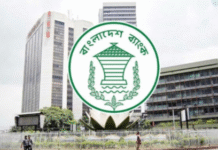
Remittance flow to Bangladesh rose 11.76 percent year-on-year to $2.09 billion in July, a development that would bring some relief for the country that is struggling to keep its foreign currency reserves in a healthy shape.
Migrant workers sent home $1.87 billion in July last year.
July receipts were the highest in 14 months and up 14 percent from a month ago, Bangladesh Bank data showed.
This upward movement, albeit largely buoyed by the Eid festival, would come as a relief for Bangladesh after remittances slipped back into negative in 2021-22 for the first time in the last six fiscal years as many remitters opted for the informal channels to send their money as economies reopened in keeping with the easing of travel restrictions.
Remittance earnings are expected to go up in the coming months since 8.77 lakh people went abroad for work in the first 11 months of the last fiscal year in contrast to 2.31 lakh in the entire FY21.
The cheapest source of foreign currencies is a crucial part of Bangladesh’s economy and would remain so in the days to come since exports cannot keep pace with abnormally high imports.
As a result, the country’s foreign currency reserves have fallen at a faster clip in recent months, driving down the value of the taka against the US dollar.
This, however, has made sending US dollars to Bangladesh attractive since beneficiaries are getting at least 10 percent higher rate compared to a year ago.
The exchange rate of the dollar rose as high as Tk 112 last week.
The country’s foreign exchange reserves stood at $39.67 billion last week, in contrast to $46.15 billion in December last year.
In July, $330 million in remittance was channelled to Bangladesh through state-run commercial banks, $32.42 million through state-run specialised banks, $1.78 billion through private banks, and $6.64 million through foreign banks, data from the BB showed.











